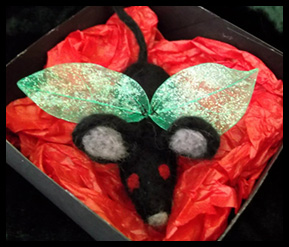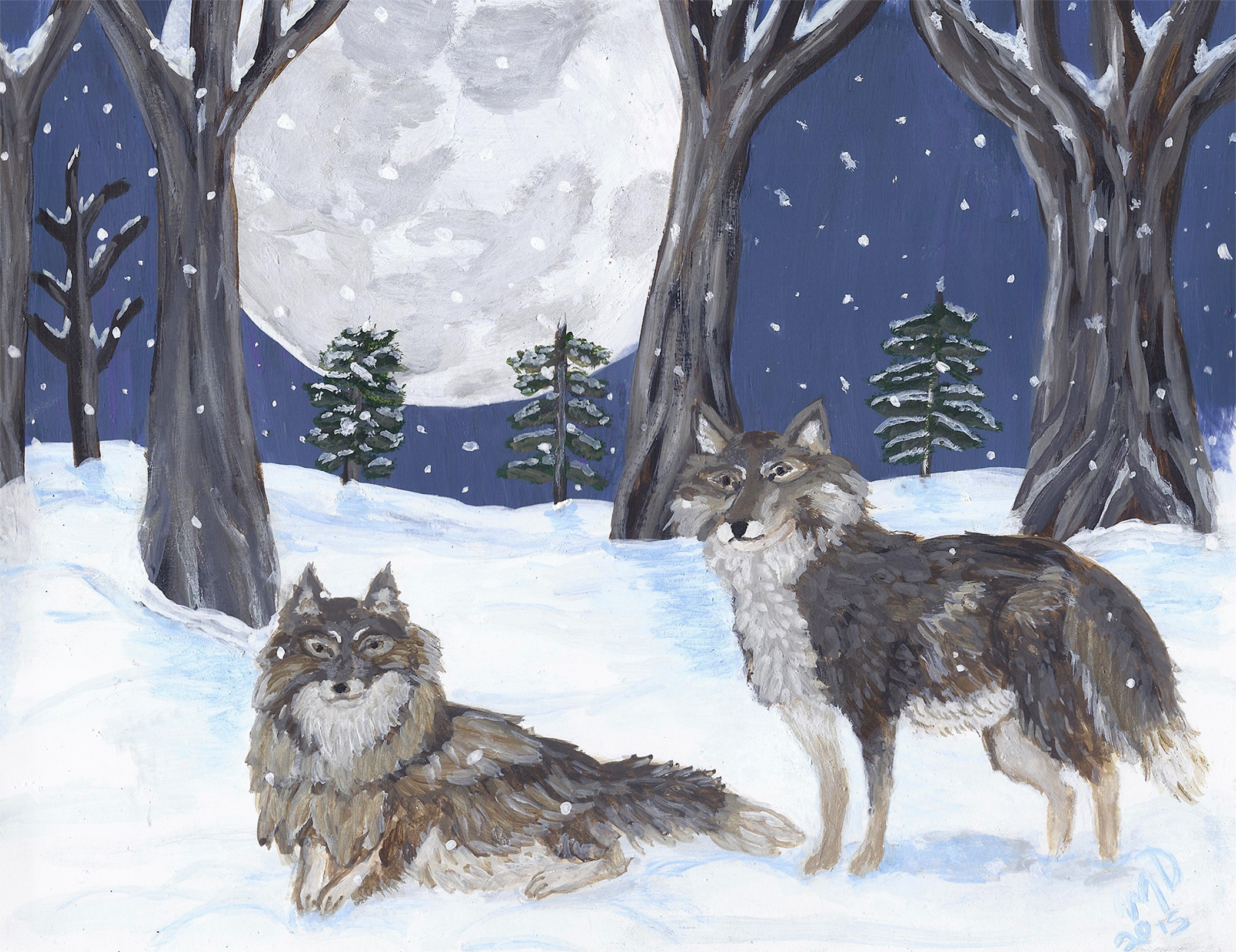Featured Artist: Abbybelle Paper mache sculpted critters and monsters come to life for every occasion from Abbybelle.
Author Archives: Angelique
Archived Featured Artist: Ashley Anonymous
Featured Artist: Ashley Anonymous Whimsical and haunting assemblage and unique home decor from Ashley Anonymous and Corn on Macabre.
The Vampires
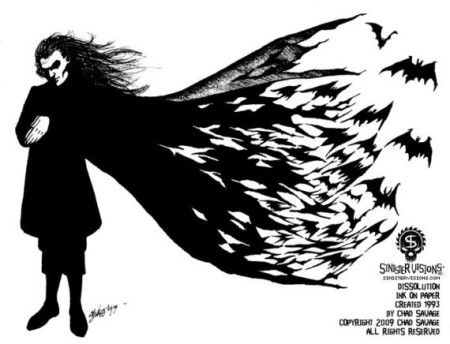
The Vampires-By Angelique Duncan
The Vampires
Many of us know of the Vampires. Cloaked undead revenants that have returned from the dead to suck the blood of their victims and spread misfortune to those they infect. They roam through the night searching for their victims in flight as a Vampire bat shifting into human form to seduce their victim for that bite upon the neck. Swiftly they return to their coffin before daybreaks and the sun rises. Where did they come from? Did or do they exist? Or are they the stuff of imagination and hysteria to explain what was misunderstood and couldn’t be given explanation?
Through out history there have been documented cases of bizarre murders and bloodlettings that have been officially classified as the work of Vampires. Individuals who committed heinous and brutal killings have been either identified in records as, or self proclaimed as Vampires. Up into modern decades, serial killers have mimicked Vampire style murder.
Vampire is a word of Slavic origin. In Turkey the translation is literally witch. Often they are referred to as revenants. Stories of Vampires, under different names, first appeared in Slavic regions in the 11th century and in European history after the 1400’s. The term Vampire began to appear in the English language around the 1700’s. It was used to describe those who it was believed had escaped from the grave after burial. Stories have been recorded and passed down of graves that had been unearthed and the remains moved or in other positions than they were left in that led people to suspect that Vampires would leave their graves by night and return to them by day.
A possible explanation for the unearthed graves of earlier times is that graveyards were not as secure as they are today making it easy for grave robbers to dig up graves to riffle for jewelry and valuables. Some in the scientific and medical community would dig up graves for the opportunity to work with human remains as cutting cadavers was considered a morbid practice and not approved of. A more gruesome explanation for the altered positioning of bodies might have been the result of patients who were buried too soon and had not completely expired at the time of burial. The disturbed coffins were the result of their desperate attempt to release themselves form untimely burial.
Though some believed that the explanation was that the deceased had become a Vampire. Efforts where made to contain the undead from returning by loading rocks upon the gravesite. Another early practice was staking corpses that were believed to be Vampires into their coffins so that they could not leave the grave at night. This may be where the belief that Vampires can only be stopped by a wooden stake through the heart stems from.
The superstitious held that that Vampires would return to the home or family they came from to settle scores or execute revenge on those closest to them. It was further believed that Vampires would retain their sexual appetite, seeking their spouses to continue their relations after death or to infect the spouse to take them with them to the grave. If a member of a household had died from disease and shortly there after other family members had fallen ill, it was believed that the member who died first had returned and infected the home. It thought as well that a household who recently experienced a death suffered from misfortune, it was a curse left by a Vampire. Today many believe that households that suffered mass deaths from a particular disease did not occurred from corpses returning from the grave, but from a lack of sanitation and proper understanding of the containment of infectious disease.
Early descriptions of Vampires were that they were pale, bloated and swollen with sunken eyes. It was thought that they drank the blood of live humans to nourish themselves after death. Those who had been bitten would suffer the same fate, to become a Vampire. These physical descriptions of vampires may have been based on people of earlier decades limited knowledge of decomposition of the body after death.
Corpses would be buried in unsealed wooden boxes and often not as deep or well covered as modern burial practices. As the body decays the stop in blood flow to the capillaries ceases, causing the skin to turn pale. The stop of oxygen flowing through the blood stream causes skin to have a gray or bluish tint. The under the eye cavity begins to sink and become purplish. Decomposition of intestines at a greater rate than the rest of the body causes bloating and in some cases can push blood up the intestines to the mouth. Bodies buried in winter tend to decompose slower and if buried right before a frost of freeze, a body will “preserve” given the appearance that the dead is not decomposing. All these elements would make for the common descriptions of undead, blood feasting revenant. The bloating would be mistaken for being well fed, and the blood seeping from the mouth evidence that the subject had been sucking blood.
Folklore tells that not all Vampires dwelled in graveyards. It was believed that some existed among the living. Those with strange unexplained appearance and behaviors was suspect of being infected as a Vampire. Accounts of people who were accused of Vampirism may have been suffering from medical disorders that were not well understood that fit the descriptions given of Vampires. Possible diseases that could have been mistaken for Vampirism were rabies, severe anemia and Photosensitivity.
Another disease associated with possible Vampirism is anemia, a condition in which the blood lacks iron. Those who suffer from anemia can become pale often with dark circles under the eyes and marbling of the skin. In some severe cases, anemia can cause gastrointestinal bleeding, left untreated can cause one to spit up blood. An early treatment for anemia was the consumption of blood to replace the needed iron.
Photosensitivity is a condition that causes an inability for an individual to go out in sunlight without ones skin blistering or burning. The lack of vitamin D would cause folks affected to be pale lacking pigment. This would add to the belief that a person affected with vampirism could only maneuverer at night.
A commonly held belief was that Vampires were shape shifters who could transform into nocturnal animals, often the animals associated, as Vampires were owls and wolves. It would not be until 1897 that the belief that Vampires shifted into bats would become a part of the folklore. The idea came from Bram Stokers tale of Count Dracula. Although Europe does have a bat population, the iconic blood feasting bats used in Vampire mythologies was not discovered until explorers identified them in Central America. The bats were named after the undead creatures of the night and Stoker evidently felt it would be a good fit for the character of his book. The link between Vampires and Vampire bats has been in place ever since*.
Cultures have had a fascination with the Vampire for centuries. The mythology of Vampires has been driven by ancient folklore, written history, fiction writers and moviemakers, who keep the legends alive. In the modern era Vampirism has become a fashionable fad. Less the gruesome bloated monsters of their origins, Vampires have become romanticized as something attractive and mysterious. The modern Vampire is sleek, debonair and seductive.
The existence of the Vampires has never been proved or disproved. Perhaps they lie waiting in their graves to rise again. Maybe they walk amongst us disguised as everyday people. Who knows if the bat that flies across the midnight sky is just a common bat or a mythological shape-shifting Vampire looking for blood.
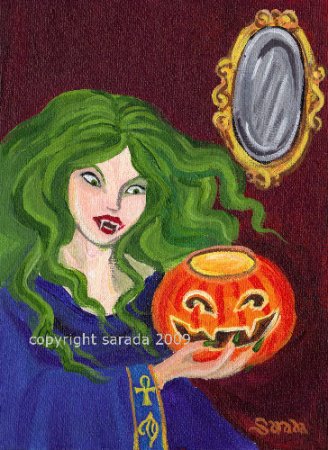
* Although vampire bats have been referenced in this entry in association with Vampires please do not fear or discriminate against them. For more information and facts about vampire bats as a species visit BatWorlds to learn more about them. http://www.batworlds.com/vampire-bat/
Artwork “Dissolution” appears courtesy of Chad Savageand may be purchased through his Etsy shop.
Artwork “Emeraude Feels Festive” appears courtesy of Art By Saradaand may be purchased through the HAB catalog.
Angelique Duncan is proprietor of Twilight Faerie Nostalgic and Capricious Objects. Check out her artist page to find links to her shops and vintage inspired traditional holiday art. Visit again next month for more traditions and folklore.
Archived Featured Artist: The Painted Peep Show
Featured Artist: The Painted Peep Show Greeting cards and prints from the perspective of a child and from the imagination to the hand of Blake Roberts.
Repost-Imbolc, The Groundhog and the Witch

****DATELINE 2015-GROUND HOG SEES HIS SHADOW-SIX MORE WEEKS OF WINTER FORECASTED!****
Imbolc, The Groundhog and the Witch-By Angelique Duncan
Everyone knows February brings Valentines Day and the month of romance and love. Most are familiar with stories of Cupid and his arrows, St Valentine and his notes to his beloved, and big heart shaped boxes filled with chocolates. February also brings that other holiday, Ground Hog Day.
For the most part the modern celebration of Ground Hog Day is acknowledged by quippy comments made by a meteorologist on some network morning show. Nearly lost to obscurity however is an interesting and varied history to the Ground Hog and his day.
Ground Hog Day is February 2nd. This date is also, according to the lunar calendar Midwinter, the half way point between Winter Solstice and Spring Equinox. The days begin to grow a bit longer and warmer, the sun becomes ever more prevalent. For ancient civilizations this was a time of hope. Hope that they would endure the second half of winter and reap the benefits of the coming spring. For agricultural folks the sun was crucial to livelihood and for their survival. Imbolc or Brighde day was a time to celebrate the breaking of the light of the sun from the darkness of winter. The seasons were ruled by the moon and the sun represented and relegated by their assigned deities.
One Celtic folklore tells the tale of Cailleach, the witch hag of winter, who reigned over the land from Samhain on October 31st until Bealtane on May 1st, but she became greedy and wanted her reign to last longer. She captured her antithesis Brighde, the sun maiden deity, who ruled the summer months. According to the folklore, the winter hag kidnapped the sun goddess and took her to her wintery cave threatening that she would not let her go as to make winter last longer than it’s normal course. If on February 2nd, the date of Imbolc. Cailleach decided to keep the sun maiden locked up she would make the skies clear and bright so that she could venture into the woods to gather supplies for the longer winter. If she had relinquished the idea of a delayed spring she would sleep in and the weather would remain the overcast of winter, thus allowing the Sun Goddess to return to bring the warmth of the sun at it’s due time.
Huntsmen and Farmers knowing of the winter witch and her greed for a longer reign of seasons would observe the reactions of burrowing animals at Midwinter. They knew the forest animals would be keen to the movements of Caileach. If the badger known as the “sacred bear” and wolverines emerged from their borrows, saw their own shadows cast from the sun created by the witch and exhibited fear then the witch was gathering supplies and had planned to prolong the cold season. However if the animals were behaving in their normal winter routines, they knew that the witch had abandoned her lofty plans and was sleeping in her cave. The sun goddess was safe, ensuring spring and the coming summer would arrive on schedule.
The Scottish carried the mythology of the winter witch as they migrated to Germany and other European regions. To keep the folklore alive they honored the brock or badger as the monitor of the witches weather related plans and the tradition became imbedded in German and Dutch cultures. However as times changed and Christianity spread over Europe the celebrations of the ancient Celtics and other nature religions were phased out for Christian interpretations of Imbolc and Brighde Day. The similar Christian rituals of Candlemass and St. Bridgid’s Day replaced these rites giving less emphasis on the lunar calendar cycles and weather with an emphasis on purification and the light of Christ. With the growth of Christianity came new calendar systems and the persecution of non-believers and pagans, the story began to change. The winter witch was no longer acceptable in practice and began to fade.
As migrations led Germans to North America the tradition was carried forth. With a lack of the familiar forest creatures of Europe, the Ground Hog replaced the “sacred bear” or brock as the chosen mammal to predict the onset or delay of the seasons. The winter witch has been all but completely lost from the American and Canadian traditions of what is now known as Ground Hog Day. The most commonly relayed story of why the Ground Hog predicts the weather is that allegedly dispute arose when the calendar changed from the lunar solar to the Julian calendar as to when spring would begin, either on February 2nd, Imbolc or March 21st known as Ostara. When ultimately the change was made to the Christian-Western Gregorian calendar the disputes over the arrival of spring were still unsettled. Some thought it best to let the badger decide, with no mention of Cailleach, just a badger and his shadow.
In modern history Ground Hog Day is more of a quaint tale about borrowing animals prognosticating the weather or the punch line of cynical and sometimes cruel humor. The most notable modern Ground Hog event is in Punxsutawney Pennsylvania started in the 1930’s. The event was initiated as a way of preserving German dialect and heritage. The Ground Hog became the symbol for the annual event. Although hundreds of tourist flock to see and take pictures of the famous Ground Hog named Phil to await his weather forecast, the celebration has less to do with the animal himself and more to do with speeches, beer drinking and entertainment.
So given the folklore of Imbolc, the Ground Hog and the Witch, when the famous Punxsutawney Phil is pulled from his nest at the famed Gobblers Knob in Pennsylvania and becomes startled, perhaps it isn’t from the cameras and lights, or even that he saw his shadow, maybe it is that he sensed the Winter Witch wandering the woods fetching supplies for her extended cold winter reign.
Angelique Duncan is proprietor of Twilight Faerie Nostalgic and Capricious Objects. Check out her artist page to find links to her shops and vintage inspired traditional holiday art. Visit again next month for more traditions and folklore.
A Very Fragrant Letter
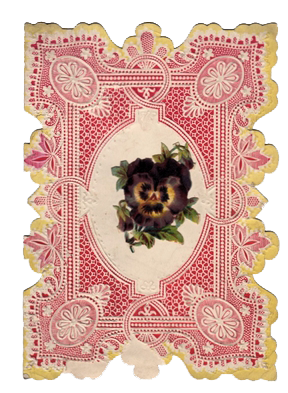
A Very Fragrant Letter
-By Debbi Decker
Valentine’s Day is close at hand. And while I normally write about the dark and spooky side of life, I thought I would take a small detour from the norm.
Did you know you can send a love letter using flowers? The younger Victorians did. Because of the many restrictions, rules and regs passed onto them by their elders, a young Victorian of courting age had to become pretty creative in order to get his or her message across. From the use of fans to flowers, they came up with various codes to express sentiments and to send messages.
I can just imagine the practice of fluttering a fan in modern times. Woman waves fan at man. Man gets excited and quickly tells his friend “Dude, she totally wants me”. Friend replies “No dude, its 90 degrees out. She’s probably having a heat stroke!”
Sadly, a woman using a fan to send a message has gone by the wayside. But, another practice is still alive and well, and that is the Tussie Mussie, or small groups of flowers wrapped in a doily and given to a loved one. A fragrant message of love and hope. For the most part. Some flowers were used solely for sending a message of rejection.
The Victorians assigned meanings to various flowers as well as gestures pertaining to the giving or receiving of those flowers. Passing a flower to another using a right hand signified “yes”, while using the left hand signified “no”. Tussie Mussies were given by young men to young girls they were interested in. If the flowers were held close to the heart, the feeling of affection was returned. If held downward, it meant rejection. I can only imagine how carefully a bouquet was constructed and with what high hopes and baited breath it was given.
Want to send a different sort of Valentine this year? Why not create a Tussie Mussie using the Victorian language of flowers. Have someone you want to give your heart to? Give them red Chrysanthemums and yellow Zinnias which mean daily remembrance and I love you. A gathering of Ferns, Forget Me Not and Gardenia mean fascination, true love, faithfulness and purity. A pot of Gardenias alone means purity, sweet love and you are lovely. You are only limited by your imagination and the availability of flowers at your local florist. Tell the recipient of your flowers that there is a special hidden meaning in the bouquet. Tell them the names of the flowers and what they mean or write them meaning of a card to give with your gift.
Googling the meaning of flowers will give you lots of information to work with. Be creative. Roses are wonderful but there’s a whole world of flowers out there. It will take a bit of planning and perhaps calling your local florists for the kinds of flowers available but worth the effort. And ladies, guys love to get flowers just as much as we do. They just don’t want that little secret out in the open!
Oh, and if you have someone in your life that you want to break away from, believe it or not, there are florists out there that specialize in sending dead flowers. Or you can always ask your florist for any flowers “past their prime”. They might look at you strangely, but I am sure they would accommodate you!
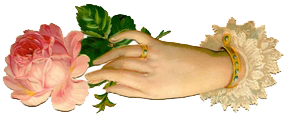
Debbi Decker is proprietor of Crazed Poppet Creations Art & Assemblage Emporium. Check out her artist page to find links to her shop and blog to read more of her writings. Visit again next month for the telling of hauntings and ghostly tales by Debbi Decker.
Archived Featured Artist: Draupner Viking Designs
Featured Artist: Draupner Viking Designs Mythology and legend of Vikings long ago come to life in the metal-smithing of Draupner Viking Designs.
Valentines 2015
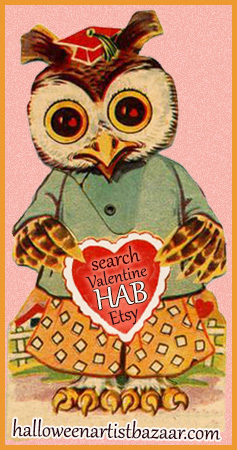
Happy Valentines Day 2015!
Looking for unique Valentines and dark art? Search HAB Valentine on Etsy, visit HAB artist websites and find handmade Halloween, holiday art and curiosities year round through the HAB shopping catalog!

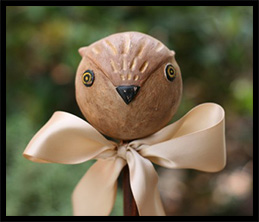
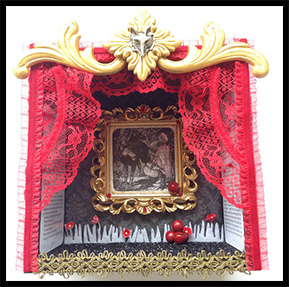
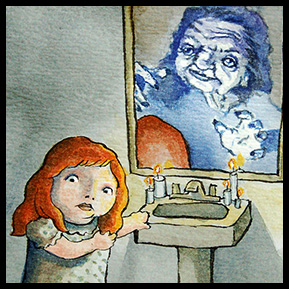

 Chad Savage on Etsy
Chad Savage on Etsy Odd Origins on Etsy
Odd Origins on Etsy Chaos In Color website
Chaos In Color website Wicked Alterations on HAB
Wicked Alterations on HAB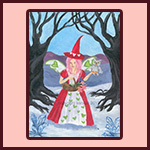 Art By Sarada on HAB
Art By Sarada on HAB Art for a Gloomy Day on Indie Made
Art for a Gloomy Day on Indie Made GhostGap on Etsy
GhostGap on Etsy Jan’s Beads on Etsy
Jan’s Beads on Etsy Twilight Faerie on HAB
Twilight Faerie on HAB Inky Dreamz on Etsy
Inky Dreamz on Etsy Meatspider on Etsy
Meatspider on Etsy Sauvage Raven Creations on HAB
Sauvage Raven Creations on HAB Lttle Shop of Horrors on Etsy
Lttle Shop of Horrors on Etsy Jynxx Designs on Etsy
Jynxx Designs on Etsy Tocsin Designs on Etsy
Tocsin Designs on Etsy